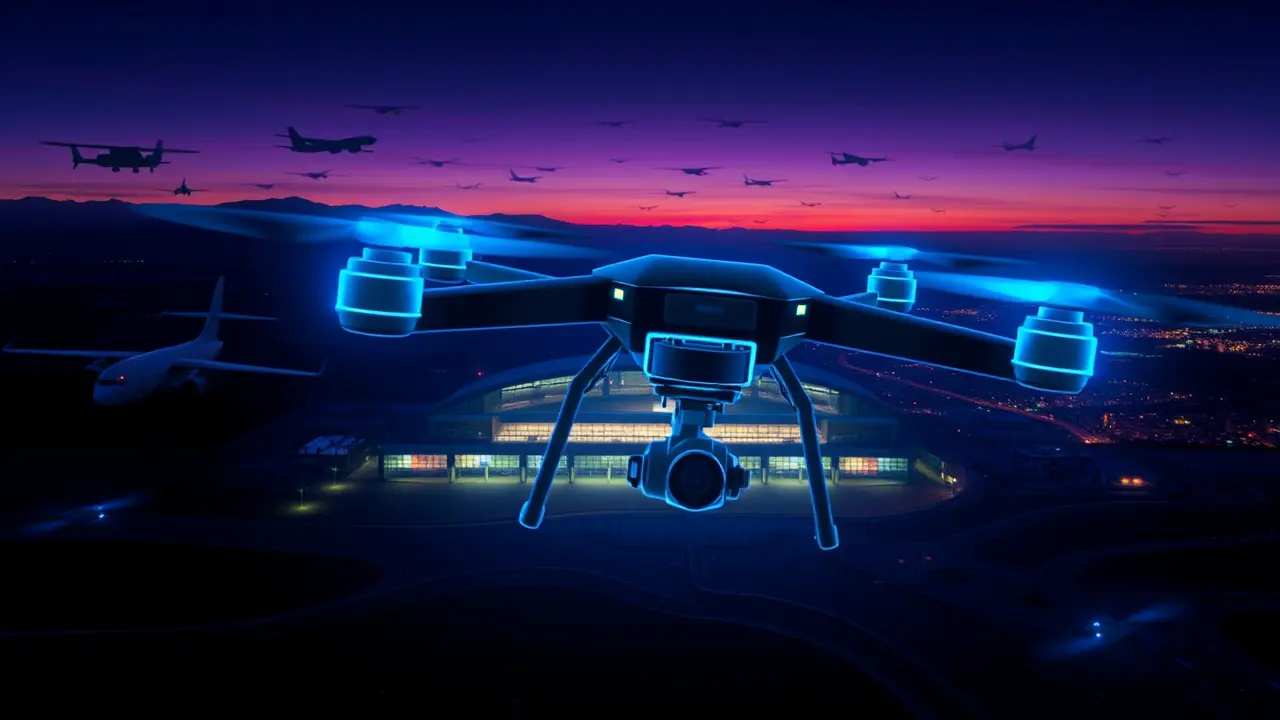
Politicsconflict & defenseMilitary Operations
Drones Spotted Over Belgian Military Base for Third Night.
OL
Oliver Scott
20 hours ago7 min read
For a third consecutive and deeply concerning night, unidentified drones have been spotted conducting unauthorized overflights above a sensitive Belgian military installation, a persistent and escalating pattern of incursions that began this weekend with similar sightings reported above two additional military terrains and in the concerning proximity of two of the nation's primary airports. This isn't an isolated series of events but a calculated pattern of aerial probing that demands a rigorous risk assessment.From an analytical standpoint, the repetition over three nights signals a deliberate testing of response protocols, a methodical gathering of intelligence on base layouts, security patrol routes, and reaction times. We must consider the full spectrum of plausible scenarios: are these the actions of sophisticated state-level actors, perhaps a neighboring power like Russia conducting reconnaissance on NATO assets, mapping vulnerabilities in the alliance's collective defense infrastructure? Or is this the work of a non-state actor, a terrorist cell conducting pre-operational surveillance for a more kinetic and devastating future action? The strategic implications are profound; Belgium hosts several key NATO facilities, and these incursions represent a direct challenge to the alliance's territorial integrity and intelligence security.Historically, such brazen aerial espionage recalls Cold War tactics, yet the technology is now democratized and accessible. The drones in question are likely commercial-grade, easily modified for extended range and payload, making attribution incredibly difficult and the threat vector both cheap and highly effective.The Belgian Ministry of Defence is undoubtedly scrambling, not just with enhanced patrols and potential signal-jamming capabilities, but with a complex diplomatic and intelligence puzzle. The primary risk scenario involves direct physical sabotage, but the secondary and more immediate risk is the erosion of operational security and the psychological impact on military personnel.A tertiary, cascading risk involves civilian aviation safety, as the weekend's reports near major airports introduce the catastrophic possibility of a mid-air collision or the disruption of critical flight paths. This multi-front aerial incursion is a textbook case of hybrid warfare, blurring the lines between peacetime norms and hostile action, and it forces a recalibration of national and NATO air defense priorities to counter a low-cost, high-impact threat that traditional radar systems are ill-equipped to consistently detect. The coming days will be critical; will the pattern continue, will a perpetrator be identified, and what will be the threshold for a more aggressive, potentially kinetic response? The airspace over Belgium has become a new front line in asymmetric conflict, and the world is watching to see how the alliance responds to this silent, buzzing invasion.
#drones
#military base
#Belgium
#security
#surveillance
#featured
Stay Informed. Act Smarter.
Get weekly highlights, major headlines, and expert insights — then put your knowledge to work in our live prediction markets.
© 2025 Outpoll Service LTD. All rights reserved.